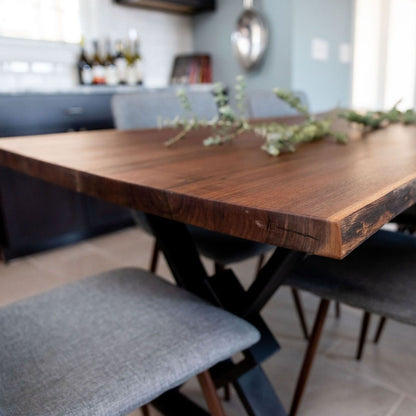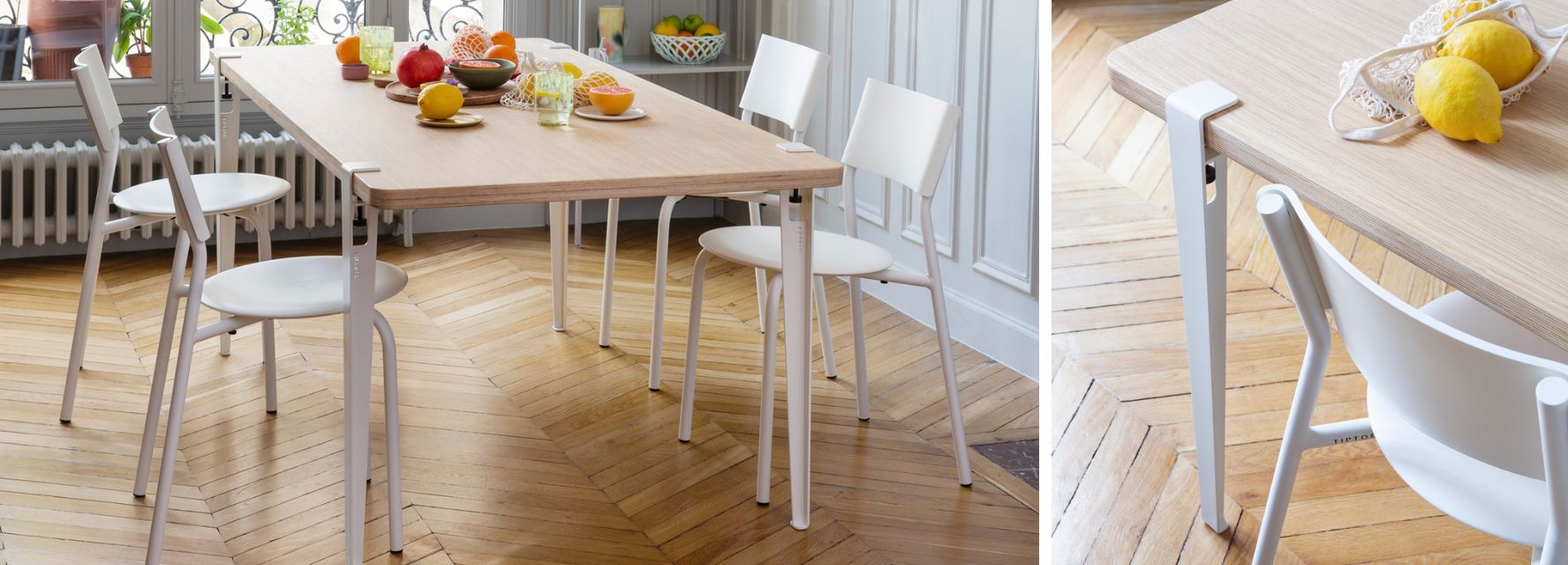From Conventional to Modern: Locate the Perfect Dining-room Table Legs for Your Style
The option of dining-room table legs plays a critical function in specifying the overall personality of your space, bridging the void between conventional craftsmanship and modern looks. While classic layouts such as cabriole and transformed legs evoke a sense of ageless class, contemporary styles like hairpin and geometric alternatives provide an opportunity for striking visual passion. Reviewing the ideal balance in between these styles needs a nuanced understanding of your existing decoration and individual taste. As you take into consideration these components, the concern remains: exactly how can you perfectly incorporate these diverse leg designs to produce a harmonious dining experience?
Understanding Table Leg Styles
The range of eating room table leg designs can considerably influence both the looks and functionality of the area. Each leg style contributes unique practical features and visual aspects, dealing with varied design preferences and use demands. Understanding these designs is crucial for selecting the right eating table that lines up with your total interior decoration vision.
For circumstances, tapered legs offer a tidy, timeless look that can improve a room's style, while pedestal bases give stability and take full advantage of legroom, making them ideal for smaller rooms. Barrette legs, a hallmark of mid-century contemporary style, introduce a commercial flair, enabling a ventilated, open feeling. Trestle legs stimulate rustic beauty, giving robust support and a feeling of eternity.
Wooden legs can bring warmth and texture, whereas metal alternatives typically communicate a streamlined, modern vibe. Ultimately, recognizing table leg designs is crucial for developing a cohesive dining area that shows personal style while making sure practicality and comfort.
Typical Table Leg Options
When picking dining-room table legs, standard options usually embody timeless style and workmanship. These layouts reflect an abundant heritage and a commitment to top quality, making them perfect for those that value traditional appearances.
Among one of the most legendary typical leg styles is the cabriole leg, characterized by its graceful curved shape. This design frequently features ornamental makings and is most typically discovered in Queen Anne and Chippendale furnishings. An additional prominent choice is the transformed leg, which flaunts a series of smooth, rounded shapes that provide a traditional look while preserving stability.
Furthermore, the straight leg, while simple, supplies a unadorned and tough framework that can mix seamlessly with a variety of tabletop styles. For those drawn to ornate detailing, claw-and-ball feet legs stimulate a sense of splendour and can function as a stunning prime focus in any eating room.
Last but not least, pedestal bases, although not purely legs, provide a different conventional choice that enables adequate legroom and can be perfectly sculpted. Each of these standard leg styles adds to the general atmosphere of a dining area, marrying function with aesthetic allure.

Modern Table Leg Styles
Modern table leg designs provide a diverse series of designs that highlight tidy lines and cutting-edge materials. These designs frequently prioritize performance while acting as striking centerpieces within a dining area. Minimalist appearances prevail, with legs crafted from materials such as steel, glass, and crafted wood, which contribute to a ventilated and modern feel.
One popular style is the barrette leg, defined by its slim, conical framework that provides security without frustrating the table top (dining room table legs). This design is usually discovered in mid-century contemporary furniture and can easily enhance various dining table shapes. One more pattern is using geometric forms, where legs might tackle angular or unbalanced kinds, adding visual interest and a touch of virtuosity

Blending Styles for Special Rooms
Commonly, house owners look for to develop distinct dining rooms that mirror their personal design by blending different design elements. This method allows for the unification of varied aesthetic appeals, resulting in a harmonious yet distinct environment. As an example, coupling a rustic wood table with smooth, modern steel legs can produce a captivating comparison that elevates the area's general best site appeal.
Additionally, integrating vintage table legs with modern table tops can stimulate a feeling of history while keeping a modern perceptiveness. Such combinations not just display private preference however also motivate creative thinking, allowing home owners to curate an area that feels both individual and inviting.
Color plays an important function in this blending process; choosing table legs that match or contrast with the existing color design can improve aesthetic rate of interest. For example, whitewashed legs can soften the daring of a dark table surface area, creating a well balanced visual.
Tips for Choosing the Right Legs
Picking the right table legs is vital useful reference for attaining both functionality and visual allure in your dining space. Begin by thinking about the overall design of your area. Traditional setups gain from legs that feature intricate makings or transformed layouts, while modern spaces might require streamlined, minimal designs.
Following, analyze the elevation and stability of the legs. dining room table legs. Basic eating tables vary between 28 to 30 inches in elevation, so make sure the legs enhance this dimension for comfort. In addition, robust products, such as hardwood or steel, can boost stability and longevity
Assess the leg form too-- alternatives consist of directly, tapered, or stand styles. Straight legs supply a classic appearance, while tapered legs can add a touch of beauty. Pedestal bases offer ample legroom and are suitable for smaller areas.
Verdict
In recap, picking the excellent dining space table Full Article legs requires careful factor to consider of both conventional and modern designs. By balancing leg style, height, and product with the total décor, a cohesive and welcoming atmosphere can be achieved.
The variety of eating space table leg designs can significantly affect both the looks and capability of the area. Eventually, comprehending table leg designs is vital for creating a cohesive eating area that reflects personal style while making certain practicality and convenience.One of the most iconic standard leg designs is the cabriole leg, characterized by its stylish bent form. Straight legs offer a traditional appearance, while tapered legs can add a touch of style.In summary, choosing the ideal dining area table legs requires mindful factor to consider of both modern and conventional designs.
Comments on “How to Maintain and Care for Your Dining Room Table Legs”